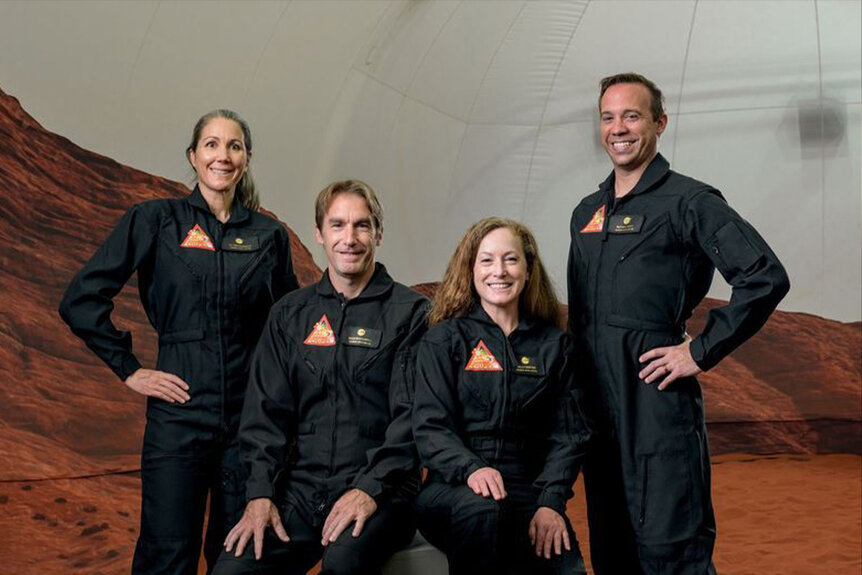Create a free profile to get unlimited access to exclusive videos, sweepstakes, and more!
NASA Is Launching a Year-Long Simulated Mars Mission
Cut off from the rest of the world for a year? Sign us up!
The 2015 science fiction film 400 Days was written and directed by Matt Osterman (Ghost from the Machine, Hover) with performances by Brandon Routh (Superman Returns, Scott Pilgrim vs. the World), Dane Cook (Waiting...), Caity Lotz (The Flash), and Ben Feldman (Cloverfield). It follows four astronauts, Captain Theo Cooper (Routh), Dr. Emily McTier (Lotz), Bug Kieslowski (Feldman), and Cole Dvorak (Cook), who embark upon a 400-day simulated deep space mission.
Over time, the crew become increasingly paranoid and delusional, they start experiencing hallucinations until they no longer know where the simulation ends and reality begins. The movie, which served as the inaugural release for SYFY’s own film banner, Syfy Films, took some inspiration from the real-world MARS-500 mission. It was a collaborative effort between Russia, the European Space Agency (ESA), and China.
RELATED: Radiation Could Limit Mars Mission to Four Years
Now, NASA is spinning up their own Mars simulation as preparation for a future crewed mission to the Red Planet. On June 25, 2023, Alyssa Shannon, Ross Brockwell, Kelly Haston, and Nathan Jones will enter a specially designed and totally enclosed habitat at NASA’s Johnson Space Center in Houston, Texas.
How NASA will utilize an enclosed habitat to simulate an actual mission to Mars
The facility is roughly 700 square feet, encompassing nine rooms. They’ll have private bedrooms, a shared bathroom, and common areas. There is also a small area outside of the habitat which simulates the Martian terrain, where the crew can carry out simulated surface operations. They’ll stay there for 378 days, testing equipment and dealing with many of the same challenges astronauts will experience during an actual Mars mission.
"The simulation will allow us to collect cognitive and physical performance data to give us more insight into the potential impacts of long-duration missions to Mars on crew health and performance. Ultimately, this information will help NASA make informed decisions to design and plan for a successful human mission to Mars,” said Grace Douglas, CHAPEA principal investigator, in a statement.
Throughout the experiment, the health and performance of the crew will be monitored so that mission designers can make adjustments or create solutions. Notably, construction of the habitat itself was also part of the experiment. Engineers used massive 3D printers to lay down the structure, as a test run for similar construction methods which might be used on Mars, the Moon, and elsewhere.
This will be the first of three Mars simulation missions carried out as part of NASA’s Crew Health and Performance Exploration Analog (CHAPEA) program. During their stay, the four volunteers will face the psychological challenges of confinement, resource limitation, and simulated (and possibly real) equipment failure. They’ll also be subject to realistic communication delays, like the kind astronauts will experience when on Mars. Basically, NASA is going to throw everything they can at the crew, in the hope that we can iron out as many wrinkles as possible before we launch a bunch of folks into deep space.
You can watch the “launch” of CHAPEA on NASA Johnson’s YouTube channel (above), June 25 at 7:30 p.m. ET.
Hopefully, they fare a little better than the ill-fated crew of 400 Days, now available from Universal Digital.































